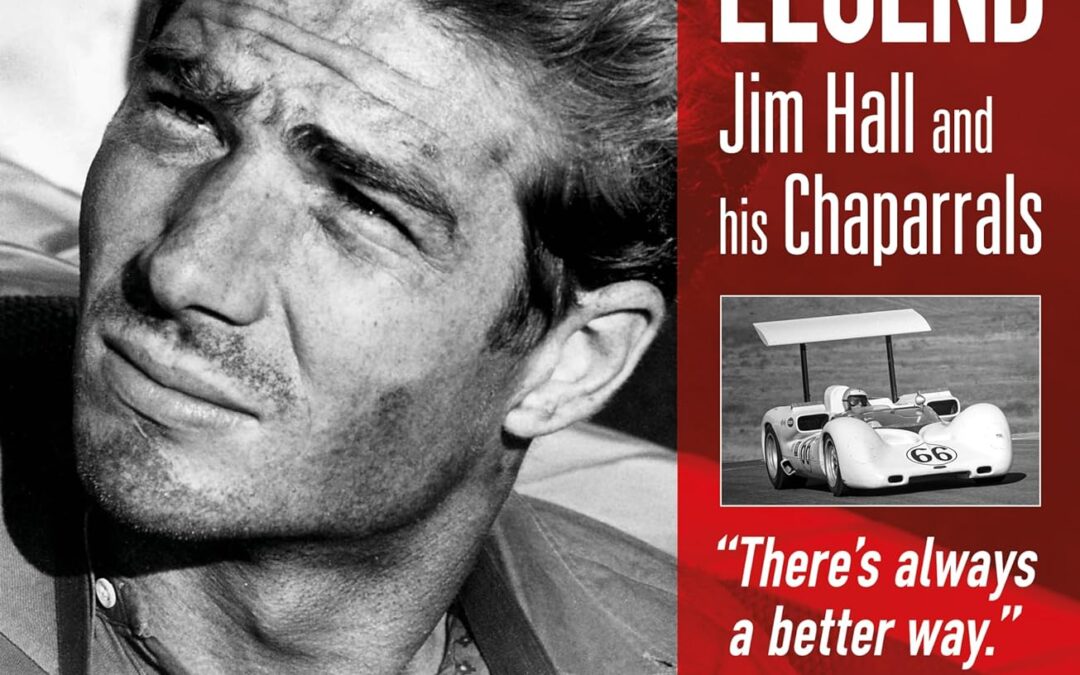
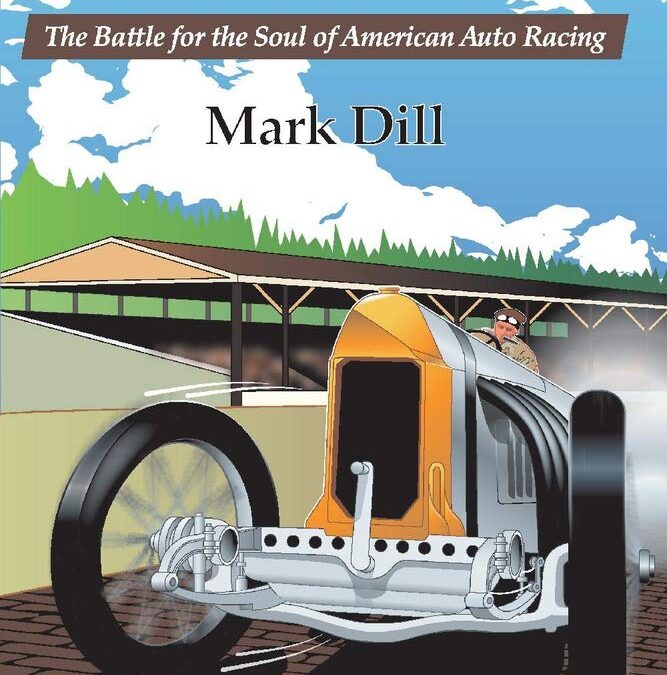
Barney Oldfield riveted his eyes into one of the 3.2 million bricks that paved America’s First Super Speedway. He sought to blot out the din of a packed grandstand and the dangerous gusts that could sweep his car into the unforgiving concrete wall. A record run could restore his reputation as America’s Speed King or cost him his life. A record run could deliver the telling blow in the raging culture war for the soul of American auto racing. Oldfield has the fastest car in the world, and now he must prove himself as America’s champion and ensure the success of his friend Carl Fisher’s titanic battle to raise the modern Indianapolis Motor Speedway up from a fallow cornfield. It’s May 1910 and you have a front-row seat.
The Legend of the First Super Speedway thrusts you into the early 20th century with vivid interpretations of auto racing and what it would be like to walk among the people and grasp their world view. You will meet the rugged characters of the era as they get “corned” on whiskey, chew “chaw,” and bounce violently as they scorch the bricks of America’s first speedway. You will ride with them on trains, bound across the craggy terrain of road races, and step over dead horses rotting in the street. The world convulsed with technological change, and the winners mastered it.
Everything unfolds through the eyes of protagonists Barney Oldfield and Carl Fisher as they grapple with a cultural battle for the soul of American auto racing. Most importantly, early auto racing’s good, bad, and ugly are put before you in an unvarnished fashion. Why? Because it really happened. No storyteller needs to dramatize a single detail because the amazing events actually took place and the awe-inspiring people behind them walked the Earth just as you do now.
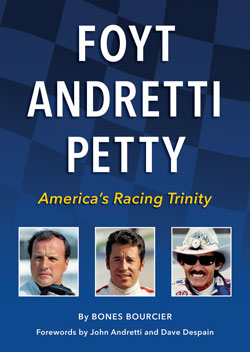
America’s Racing Trinity
Twenty years after they hung up their helmets, their names remain synonymous with the sport they carried to new heights. A.J. Foyt, Mario Andretti, and Richard Petty rose to fame just as the American media – print, radio, and, crucially, television – began to legitimize auto racing. The timing was perfect. In Foyt, Andretti, and Petty, the nation found characters as compelling as any in sports or entertainment.
Foyt was all Texas, John Wayne in a fireproof suit, stomping into Victory Lanes from Indianapolis to Le Mans. Andretti, who’d sailed from Italy with his family at age 15, struck for all outsiders the same yes-you-can chord sounded by another Italian-American, the great Frank Sinatra. Petty, the genial North Carolinian who signed autographs until the last fan went home, put a smiling Andy Griffith face on the American South, no small feat in the tumultuous ’60s.
They crossed paths often, on the track and in the headlines. Take 1967, which opened with Andretti beating NASCAR’s best at Daytona, peaked with Foyt’s third Indianapolis 500 win, and ended with a record 27 victories for Petty. Or the three-season stretch from 1977-79, during which Foyt became the first four-time Indy winner, Andretti earned the World Driving Championship, and Petty captured a landmark Daytona 500.
They even throttled back their careers in near-unison, Petty in 1992, Foyt in ’93, Andretti in ’94. Today all three are revered; as they walk through crowded pit areas, people step back to make way. Charisma never ages.
This is no mere three-act biography. Laced with quotes from first-hand interviews with Foyt, Petty, Andretti, and their peers, and spiced with period accounts from the motorsports world and the changing social landscape, this is award-winning author Bones Bourcier’s history of modern American automobile racing as refracted through the lives of three extraordinary champions.
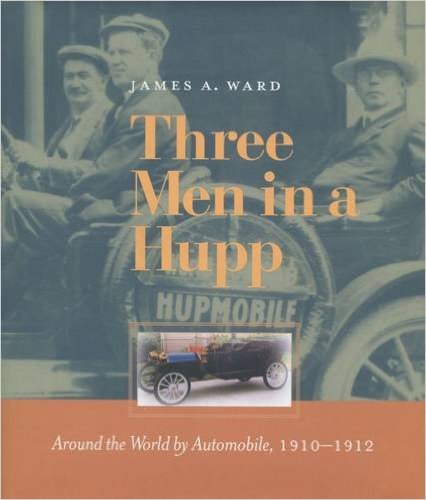
In late 1910, three American adventurers set off on a remarkable around-the-world journey by automobile. Sponsored by the Hupp Motor Car Corporation, the trip was intended to publicize the durability of the Hupmobile and help stimulate export sales.
The car was first driven from Detroit to San Francisco—a very difficult journey in its own right in 1910. From San Francisco, the car and its drivers took a steamship to Hawaii, and from there to Fiji, Australia, New Zealand, and Tasmania, unloading and touring at each port of call. The men and their machine spent the next five weeks attempting to drive through the Philippines, and then pushed on to Japan and China, where they managed to stay one step ahead of the Chinese revolution. They then drove across India, and from there, sailed to Egypt, brining the first automobile ever to be seen in that country. Next, the Hupmobilists sailed to Italy. In Rome, the adventurers met Pope Pius X, and then drove north to Germany and France. They crossed the English Channel to Folkstone, toured England, and then ferried from Liverpool to Ireland. They returned to New York in time for the 1912 auto show.
In the end, the Hupmobile was driven 41,000 miles and transported by steamship another 28,000. A new world was dawning, both for transportation and for American business enterprise.

Among the engineers fueling the rapid rise of the automotive industry at the dawn of the 20th century was James Allison, a fountain pen maker who joined with Carl G. Fisher in 1904 to found Prest-O-Lite, an early manufacturer of the power source for automotive headlights. This biography tracks Allison’s involvement in the Indianapolis 500, which he cofounded with Fisher and two others, as well as his machine shop’s construction of the Liberty engine, the first mass-produced aircraft engine, and also the V1710, the workhorse of World War II military aircraft. Through his unique ingenuity and perseverance, Allison created a legacy that still resonates today at the Indianapolis 500, Rolls-Royce, and Allison Transmission.

Greg Pullen charts the rise, fall and rise again of Royal Enfield, from the company’s pre-motorcycle beginnings in Redditch, through the impact of the two World Wars, the importance of exports to India and subsequent establishment of factories there, to changes in ownership, recently launched models and new concept bikes for the future.
With 190 photographs, this book includes the V-twins, from the 1930s K and KX range to a glimpse of the concept V-twin shown in 2018; the singles, from 2-strokes to side-valve 4-strokes, and the ohv versions that first used the Bullet name, through to the new singles built in India. The British Bullet: its arrival in 1948 and production in UK, the original orders from India and subsequent setting up of production there are discussed.
The 250s (1958–68), including the Turbo Twins, and the big twins, from the 1948 500 are covered along with the Twin to the final Interceptor in 1970, including the 800cc prototype and the Clymer Indians. The new twins: the 650cc Royal Enfield Interceptor and Continental GT twins and the Bobber concept bike are featured as well as competition success, with notable ISDT achievements, star rider Johnny Brittain and racing the big twins, and Geoff Duke in the GP5.
The British factories and new opportunities with the Indian factories are remembered.
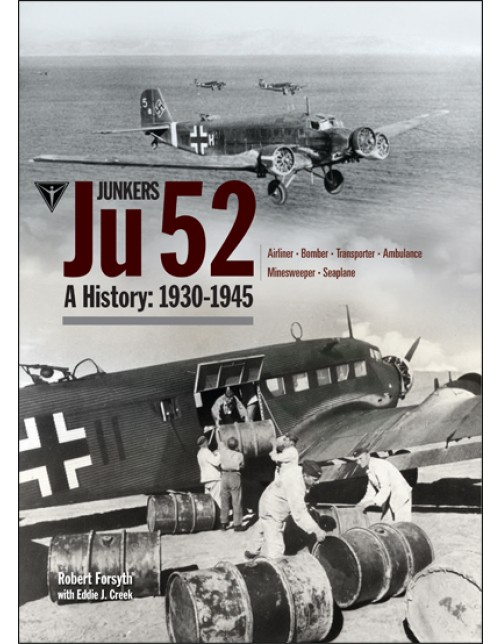
As with the other recent books in this series, this Classic study of the Ju 52 offers the most definitive account published in recent years of this bulwark of the Luftwaffe, which first saw military service in the 1930s and was then engaged in operations in the Spanish Civil War through the end of World War II.
The all-metal, three engine Ju 52/3m enjoyed a solid reputation among its crews and the troops and paratroops who used it and depended on it. It is a machine synonymous with the images of the German attacks on Holland and France in 1940 and Crete in 1941 when hundred of “Tante Jus” were used to drop paratroopers to successfully capture key tactical and strategic areas.
The full history, however, goes back much further. Built as a passenger aircraft for Deutsche Lufthansa, the Ju 52 ranges as far as South Africa, Mozambique, India and Latin America, as well being operated by several other European countries such as Belgium, Equador, Peru and Uruguay. Britain operated several Ju 52s.
The aircraft was first blooded in the Spanish Civil War, where it was pressed into service as a crude, but effective, bomber with the Legion Condor. From then on the Luftwaffe deployed it on every battle front in the West, in the Mediterranean and in the East. An example also flew in Iraq. The Ju 52 served as a stalwart transport, often operating in the most hostile conditions, with ice or dust, lifting men, animals, food, supplies, ammunition, mail, and spare parts vital for German military operations, such as the North African supply routes at Demyansk, Stalingrad and also in the Ardennes in 1944. It was also converted into the ambulance and mine-hunting roles, and was adapted as a seaplane. After the war, the Ju 52 flew on as late as the 1980s, testimony to its strength and reliability.

The Harley-Davidson Story: Tales from the Archives is a fascinating, visually driven overview of the motor company’s rich story, created in cooperation with the Harley-Davidson Museum.
The story of Harley-Davidson is a classic American tale of spirit, invention, and the right idea at the right time. From its beginning in a small Milwaukee shed in 1903, William Harley and his cousins, the Davidson brothers, set in motion what would eventually become the world’s most iconic motorcycle company.
While other motorcycle companies rose and fell through the teens and 1920s, Harley went from strength to strength, whether introducing its first V-twin motor or dominating race tracks across America. The Milwaukee Miracle even prospered during WWII, building war bikes for the armed forces. By the 1950s, they’d buried their last American-built competitor, Indian, and gained a hold over the US market that they maintain to this day.
A remarkable story deserves a remarkable space to recount it. Such is the Harley-Davidson Museum in Milwaukee, which opened in 2009. Harley-Davidson partnered with Motorbooks to create this book relaying Harley-Davidson’s story, as told through the museum’s displays and archive assets.
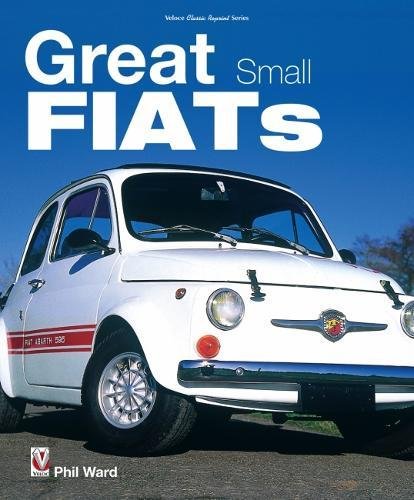
Great Small Fiats is a tribute to some of the best small Fiats ever produced.
In deciding which models to include in this book, Phil Ward concentrated on three criteria – greatness, size and emotion. Where size is an easy parameter to qualify, greatness is more complicated because it is a combination of of both the manufacturer’s and the public’s opinion. A car that is highly regarded by the public may not have been a commercial success and vice versa. A truly great car is one that works well for both parties. Emotion may be considered to be an element of greatness in that the public’s ‘love’ for a car is a fantastic benefit for a manufacturer and must be treasured. Fiat have made the mistake of ‘improving’ an icon on several occasions only to find that public opinion went against them. Fortunately Fiat has been magnanimous enough to respond by giving the car-buying public more of what it wants. As long as they continue to do so then Fiat’s reputation as the world’s greatest small car manufacturer is set to continue.
The author chose the Topolino as the starting point, as it fulfils all the criteria, and was the first Fiat built in the late 1930s to satisfy the Italian public’s new-found desire for mobilisation. The old conventions of car production were turned upside down with the arrival of the 600 which revolutionised car production techniques and maximised on passenger space and performance at minimal cost. These principles continued via a succession of models which include the 500, 850, 126, 127 through to more recent models like the Cinquecento and Seicento.
Running in parallel with these “cheeky” Fiats, this book covers a range of slightly larger cars that were built in huge numbers. Though rather staid in appearance, the 1950s Millecento was family transport for millions of Italians covering three decades, four when the Indian-built cars are included. Similarly the 128, Panda and Uno were ‘the’ Italian small cars of the ’70s, ’80s and ’90s. Nuova Panda carries the banner through to recent models.
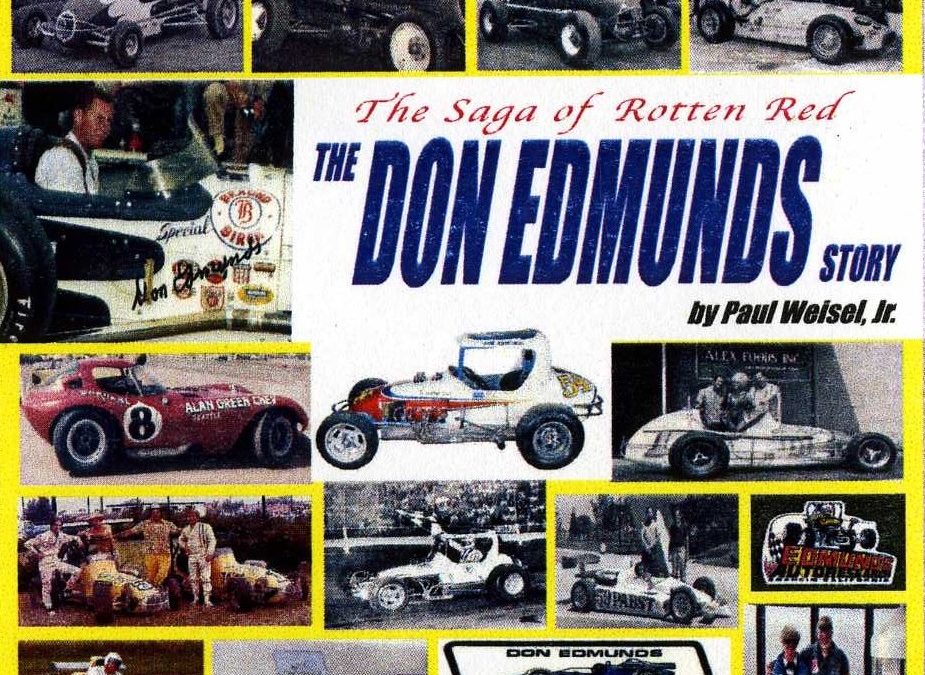
Many people remember Don Edmunds as the premier builder of open wheel race cars during the 1960s, 1970s, and into the early 1980s, but the Don Edmunds story isn’t just about iconic midgets and sprint cars. Don was a true innovator, whose cars combined art and performance and were always at the forefront of open cockpit safety and design, but few readers realize Don Edmunds touched so many parts of the racing world and beyond. Author, Paul Weisel, Jr., has partnered with Don to tell the Edmunds story in a new 182-page book, complete with more than 200 photos, titled, ‘The Saga of Rotten Red – The Don Edmunds Story’.
From his childhood in Anaheim, CA, his teenage years as a part of the southern California roadster scene, including appearances at El Mirage and Bonneville, his first oval track exposure racing jalopies with the California Jalopy Assn., to his graduation to the midgets of the United Racing Assn., the book chronicles Edmunds’ journey toward his greatest racing triumph, qualifying for the 1957 Indianapolis ‘500’ and subsequently being named ‘Rookie of the Year’ at Indy. Along the way Don learned the ropes from car owner, Doug Caruthers, paid attention to tips by drivers, Billy Cantrell, Edgar Elder, and others, worked with Eddie Kuzma, fabricating race cars for Indy and the championship trail, and had his moniker of ‘Red’ transformed forever to ‘Rotten Red’, a tag he has always embraced. Even today, Don signs all his e-mails with ‘RR’. Don types the letters with a grin and all his friends smile when they read to the end of the message.
After Indianapolis 1959 Don retired from driving championship cars and returned to Anaheim to enjoy married life and to pursue his plans to eventually open his own race car shop. Stints with Bill Devin, Bill Stroppe, and Bill Thomas culminated with Don’s design and fabrication of the prototype of the Cheetah sports car and gave Don the practical experience he needed to open Don Edmunds’ Autoresearch in 1964.
Three separate shots at Indianapolis as a car builder and literally hundreds of midgets, sprint cars, supermodifieds, and super vees later, Don Edmunds replaced Frank Kurtis as the country’s most prolific designer and builder of open wheel race cars. Don Edmunds was on the cutting edge of open wheel race car design and later enjoyed a superb career driving supermodifieds, including a junket to compete with cars of his own design in South Africa. In 1991, Don Edmunds was inducted into the National Sprint Car Hall of Fame and in 1994, the National Midget Hall of Fame, two awards he holds in the highest regard.
Away from the track Autoresearch designed and built Evel Knievel’s X-1 Skycycle, the prototype vehicle the stuntman would use to jump the Snake River Canyon in Idaho. Don also became involved in the restoration of several significant 1930-era race cars and used his ‘retirement’ to produce dozens of stunning scale model race cars. Author Paul Weisel takes the reader on all of Edmunds’ adventures and provides insight into the thought process of one of the true ‘dreamers of the day’.
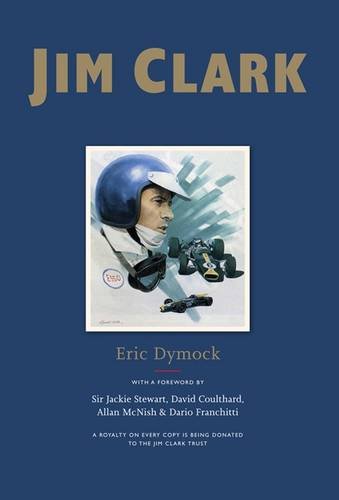
A new edition of the universally acclaimed out-of-print 1997 book is lightly edited & completely redesigned in colour throughout. This classic of motor racing celebrates the life and achievements of Jim Clark (1936-1968), World Champion 1963 and 1965. A royalty on every copy sold in Britain (price GBP22.50) will be donated to the Jim Clark Trust. Patrons Sir Jackie Stewart, David Coulthard, Dario Franchitti and Allan McNish celebrate the new edition, Sir Jackie describing Clark as “…the best racing driver I ever raced with and against”. Three times Le Mans winner Allan McNish: “A modern driver winning the British Grand Prix, racing in Formula 2, then at Indianapolis would be unthinkable.” David Coulthard: “There is no question that Jim’s achievements and Jackie Stewart’s input were fundamental to me becoming a professional racing driver.” Eric Dymock details Clark’s place in motor racing history and total command of Formula 1, portraying him as an individual, nail-biting and insecure, yet the greatest driver in any sort of motor sport.Celebrating the life and achievements of Jim Clark (1936-1968), Formula 1 World Champion 1963 and 1965, this book details his place in motor racing history and his total command at the wheel. From a Scottish farming family, Clark rewrote the annals of American racing at Indianapolis, second at his first attempt in 1963, winning in 1965. Seemingly equal to the odds of the most dangerous eight years at the top of motor racing, Clark died in an unlikely accident in a minor race at Hockenheim on April 7 1968. Genius at the wheel was not enough. Rivals’ campaigns for safety thereafter saved countless lives on and off the track.
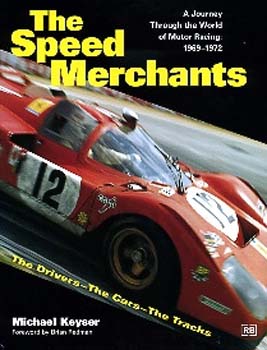
The Speed Merchants tells the story of Michael Keyser’s racing and film experience, across the U.S. and Europe, from 1969 through 1972. He relives what it was like to watch the great Ferrari 512s and Porsche 917s that dominated the world manufacturer’s series in 1970; to follow Mark Donohue and Roger Penske as they shook up the Trans-Am through Canada and the United States; to see McLaren’s hold on the Can-Am finally ended. The Speed Merchants details the successes and failures of such drivers as Vic Elford, Brian Redman, Jo Siffert, Pedro Rodriguez and Jackie Stewart; and racing at such tracks as Daytona, Sebring, Indianapolis, the Targa Florio, the Nurburgring, Monaco and Le Mans. When first published in 1973, The Speed Merchants was hailed among other books on racing as ”the standard by which other works should be judged.” Now, the author has totally revised the book, more than doubling the number of photographs and adding a personal dimension that could only be brought by someone in his unique position as driver, photographer, and filmmaker.
With brilliant full color photography and evocative prose, The Speed Merchants brings to vivid life the sights and sounds of a lost era.
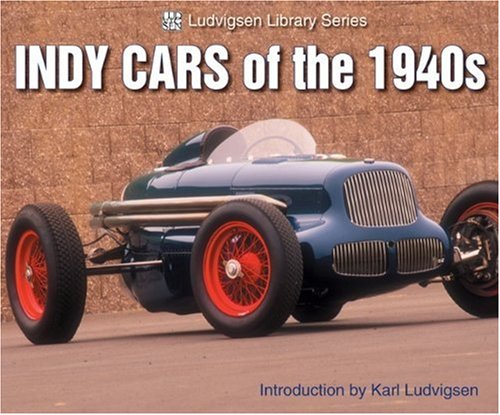
For the Old World caught up in the traumas of a bitter conflict, Americas Indianapolis 500-mile race was a New-World beacon of auto-racing speed and excitement during the 1940s. While racing stopped in Europe in 1939, the Indy 500 raced on in 1940 and 41, bringing victories in both years for Wilbur Shaws Maserati. Racing resumed in 1946 with Shaw in charge of the Speedway, now owned by Tony Hulman.
The post-war fields were full of exotic machinery from Fageols twin-engined four-wheel-drive car and the front-drive Blue Crowns-1947-48-49 winners-to the rear-engined Tucker Millers and Rounds Rocket plus the imported 1939 Mercedes-Benz of Don Lee and numerous Alfa Romeos and Maseratis. The first Kurtis racers made their debut, as did the awesome Novi. The six-cylinder Thorne Special won in 1946 and Indys only six-wheeled car competed as well.
This new Ludvigsen Library book brings to dramatic life the spectacle and excitement of the 1940-1949 era at the Speedway.
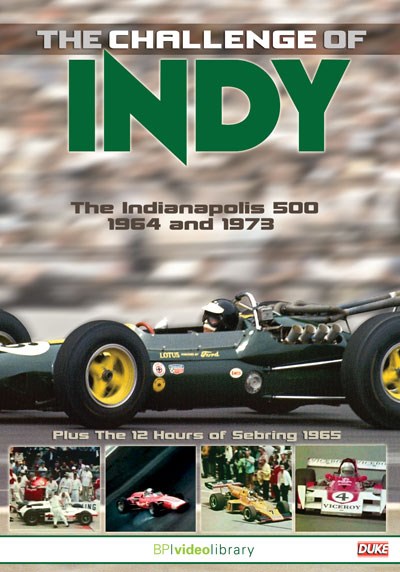
Race fans – Start your Engines and get ready to experience The Challenge of Indy!
The Indianapolis 500 is one of the greatest motorsport events, providing a unique challenge for driver, machine and team on the high-speed banked oval at the world-famous Brickyard. This DVD features two action-packed archive films charting races which are etched into the memories of US motorsport fans – although for very different reasons.
We open with the 1964 Indy 500, following practice, qualifying and the race as the established American stars battle to hold off a European invasion led by Formula One star Jim Clark and his Ford-powered, Colin Chapman-designed Lotus. The rear-engined Lotus was on the verge of revolutionising American motorsport forever, with Clark nudging the track record up towards 160mph. This would be the final year of domination for the front-engined machines of US greats like A.J. Foyt and Parnelli Jones, and what a last year! The thrilling action footage captures the slides, crashes, spins and wheel-to-wheel dicing as Foyt laps the entire field in his Sheraton Thompson Special. It was a moment of motorsport history, but as this classic film shows, it was also a full-throttle race.
Fast forward almost a decade for our second film, Going to Extremes. This is the story of the bizarre 1973 Indianapolis 500, which took three days to run and even then didn’t go the full distance. Once again we are treated to practice and the gripping drama of making the cut in qualifying before turning our attention to race day. Among the stars lining up are legends like Foyt, Mario Andretti, Al Unser and Bobby Unser – and with the first 200mph lap in sight, there is the prospect of a great Indy 500. However, what should have been a great race turned into three frustrating days of waiting before the fans were able to enjoy a single green flag lap. When the racing did get under way, it was breathtaking, and out superb archive footage brings you all the action.
There’s also a chance to enjoy another classic American motorsport event, the 12 Hours of Sebring. The film 12 Hour Grind takes us back to the rain-hit 1965 running of this classic sports car race, which sees Dan Gurney, Graham Hill, Paddy Hopkirk, Ritchie Ginther and many more stars doing battle in a variety of roaring racing machines, including Ford GT40s, AC Cobras and stunning Chaparrals.
“If you can’t wait for May’s Indy 500, relive the event’s glory days with this DVD. It covers great races from 1964 and 1973 from the infamous Brickyard, with footage of Brits like Jim Clark, Graham Hill and Paddy Hopkirk, but strangely the rain-hit 1965 Sebring 12 Hours race is a bonus feature” Auto Express
“This DVD captures the best footage from two of the greatest races ever held at the famed Brickyard, plus bonus footage from the 1965 12 hours of Sebring. the 1964 Indy 500 was the last year a front-engined car won the race, and the bizarre 1973 Indy 500 took three days to run and didn’t even go the full distance. Watch the full story, from practice to the chequered flag, of these spectacular events” Autocar
“With colour films of practice for the ’64 and ’73 500 miles, and bonus material covering the run-up to the ’65 Sebring 12 Hours, there’s plenty to enjoy here. We loved the footage of Pole Day at the Brickyard in ’64, where ‘James Clark Jr’ took the fight to the roadsters. Great to see Smokey Yunick’s Hurst Floor Shift Special, too”
Autobooks-Aerobooks 2900 W. Magnolia Blvd. Burbank, CA 91505 (818) 845-0707 Hours: Tuesday-Friday 10:00 AM – 6:00 PM Saturday 10:00 AM – 6:00 PM Closed Sunday and Monday Accept Credit Cards gift cardYES, We have Gift Cards - Click Here AUTOBOOKS IS OPEN...

















